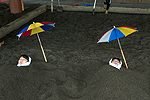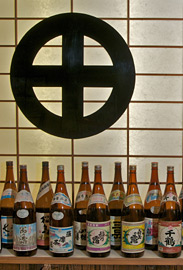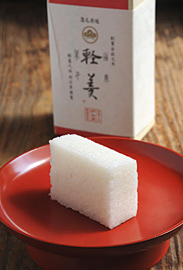Web Japan > Trends in Japan > Food & Travel > Kagoshima
Kagoshima
Dining and Relaxing at Japan's Southern Gateway
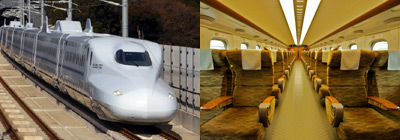
Left: Sakura, the newest model Kyushu Shinkansen. (Photo: Railman Photo Office)
Right: Calm, relaxing interiors evoke a Japanese aesthetic.
Located at the southernmost point of Kyushu Island, Kagoshima bills itself as the southern gateway to Japan. Boasting a distinct culture, unique food and volcanic climes, the region offers an array of sights and flavors to be enjoyed.
Luckily for travelers, the launch of the Kyushu Shinkansen line connecting Kagoshima with mainland Japan makes it easier than ever to get to Kagoshima quickly, comfortably and in style. Passengers with reserved seats on certain N700 series trains connecting Kagoshima and Shin-Osaka can experience an elegant, Japanese style interior, complete with birch tables and hard maple armrests. Via the Mizuho Shinkansen service, Kagoshima can be reached in approximately three hours and 45 minutes from Shin-Osaka station, the gateway to the Kansai region, about an hour shorter than before. In addition to making the region more accessible, the bullet train now links Aomori, the northernmost part of Honshu, to Kagoshima, the southernmost part of Kyushu.
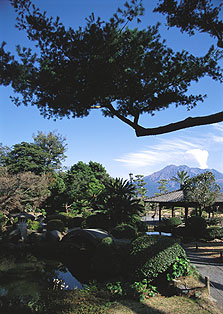
|
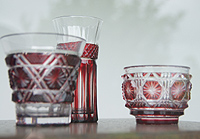
Left: The magnificent Sengan-en Garden incorporates a view of the smoking Sakurajima volcano as part of its design. |
Relaxing Kagoshima StyleKagoshima offers an array of sights to see, places to relax and delicious foods. To the north of Kagoshima City lies Sengan-en Garden. Built in 1658, it is the former villa of the Shimazu family. The scenic spot overlooks the coast and beautifully frames Sakurajima—the local, well-known volcano that usually belches small puffs of volcanic smoke into the area once a day and alone attracts hordes of visitors to the area. Also on display at Sengan-en is some of the area's famed and colorful cut glassware, also known as Satsuma Kiriko.
For sheer relaxation, the many hot springs that dot Kagoshima are hard to beat. The city and surrounding area are so blessed with hot springs that the bulk of the local public baths also rely on water from the springs. Sand baths, such as the Ibusuki Sunamushi Onsen located in the Ibusuki area of Kagoshima, are another benefit of living close to a hot spring zone that should not be missed. Instead of water, here one can “bathe” in naturally heated sand.
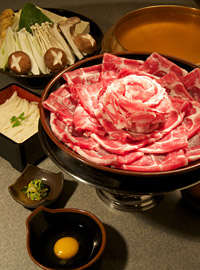
Kurobuta pork shabu-shabu. Thin slices of rose-colored pork are waved back and forth in simmering soup, then dipped in raw egg. (Cooperation: Ajimori)
Enlarge photoA Stunning Variety of Delicious FoodAfter a soak in the water or sand, there is a stunning variety of local food to savor. Kurobuta pork, literally “black pig,” is served in a number of ways from fried and boiled to the popular shabu shabu—lightly dipped into simmering soup. Interestingly, locals named roppaku kurobuta (“six whites”) after the six white spots typically found on a pig's nose, tail and feet. Though not as famous by comparison, Kagoshima beef is also renowned for its flavor.
Another culinary standby is what is known locally as tsukeage, fried fish cakes—although the rest of Japan knows the dish as satsumaage, since Satsuma is the historical name of the region. It frequently contains carrots, burdock root or sesame seeds and is enjoyed a number of ways: raw, lightly roasted or dipped in a mix of wasabi (Japanese horse radish) and soy sauce.
Likewise, kibinago is a signature traditional Kagoshima treat. In season in May, June, December and January, these small white fish are delicious whether fried, dried or served as sashimi, and dipped in some sumiso, or vinegar miso (soybean paste). Caught at night, delivered to restaurants first thing in the morning and served by the afternoon, the fishes' freshness is discerned by translucency—the more translucent the fish, the fresher and more delicious it is.
Finally, no Kagoshima meal would be complete without imo-jochu, a type of shochu spirit distilled from sweet potatoes. Experts say that it goes well with any food, especially the sweet and spicy dishes prevalent in Kagoshima cooking. Shochu has a history of at least 500 years in Kagoshima and there is a vast selection to choose from.
Also be sure to save room for dessert, as Kagoshima is no slouch when it comes to sweets. One can elect to punctuate a meal with any of the local sweets made from sweet Satsuma potatoes or possibly a spongy karukan, a white steamed sweet made of high-quality yams, powdered non-glutinous rice and sugar.
At the south end of Japan's main islands, Kagoshima offers a bounty of enjoyment for travelers. From beautiful scenery and hot springs to the local food culture including meat, fish, sweet potatoes, confectionaries and shochu spirits — all are now easily experienced with the opening of the Kyushu Shinkansen service. (August 2011)
- Fukuoka, a Center of History and Culture (March 2010)
- Kumamoto, Famed for Its Castle and Caldera (July 2009)

